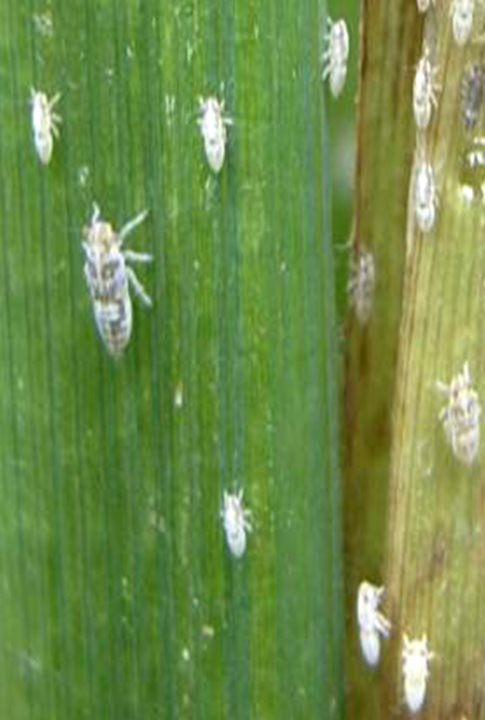Mechanism of action
Buprofezin is a novel selective insecticide that inhibits insect growth and development, with strong contact killing effects and gastric toxicity. The mechanism of action is to inhibit the synthesis of chitin in insects and interfere with metabolism, resulting in nymphs molting or wing deformities and slow death. It has strong selectivity towards pests, high insecticidal activity, long residual efficacy period, low toxicity, and low dosage. It is safer against natural enemies and has good overall effects. There is no issue of cross resistance with other insecticides.
Thiazinone is an insect growth regulator insecticide with strong contact and stomach toxicity. It is commonly used for Pest control of rice and vegetables, and can be used to control a variety of fruits such as rice, potato, citrus, cucumber, wheat, tomato, and melon planthoppers, leafhoppers, whiteflies, cotton whiteflies, rice brown planthoppers, sagittal scale, orange mealybug, red round scale, and other pteran pests. It has persistent killing activity against some Beetle larvae and young mites.
Characteristics of Buprofezin
1) Selective strong Buprofezin to pests is a new selective insecticide that inhibits the growth and development of insects. It has strong selectivity to pests and is widely used in vegetables, rice, wheat, potatoes, citrus, cotton, tea trees, etc. It can effectively control Leafhopper and planthoppers on rice, Leafhopper on potatoes, Whitefly on citrus, cotton and vegetables, and coccoidea Various pests such as the Shield Scale family and the Powder Scale family have good efficacy against whiteflies, planthoppers, leafhoppers, and scale insects, but are ineffective against Lepidoptera pests such as diamondback moth and cabbage beetle.
2)Buprofezin has a high killing power on larvae, with strong contact and gastric toxicity. It has a strong ability to kill young nymphs, but a decreased ability to kill nymphs over 3 years old. Although it cannot directly kill adults, it can shorten their lifespan, reduce egg production, and prevent eggs from hatching normally. Even if the hatched larvae die quickly, it can reduce the number of offspring. Thiazinone has a certain permeability to crops and can be absorbed by crop leaves or leaf sheaths, but cannot be absorbed and transmitted by roots.
3) The efficacy of Buprofezin is slow and the residual period is long. It is recommended to use it in the early stages of pest occurrence and when the density is low. It usually takes 3-5 days after application. The nymphs only begin to die when they molt, and the number of deaths reaches a peak 7-10 days after application, resulting in a long efficacy period. Generally, the direct pest control period is about 15 days, which can protect natural enemies and exert their effectiveness in controlling pests, The total effective period can reach about 1 month
4) Low toxicity at commonly used concentrations, safe for crops and natural enemies, making it an ideal pesticide variety for comprehensive pest control.
5) No cross resistance with other insecticides Buprofezin has no cross resistance with mainstream Neonicotinoid insecticides and pyrethroids, and can be compounded with imidacloprid, Nitenpyram, beta cypermethrin, bifenthrin, Chlorpyrifos, and pymetrozine to produce compound insecticides.
6) He is good at preventing and controlling scale insects. Buprofezin is highly cost-effective. With the delisting of the highly toxic pesticide Methidathion, the products for preventing and controlling scale insects have a short gap. Although Neonicotinoid insecticides are effective against scale insects, such as Chlorpyrifos+acetamiprid, Chlorpyrifos is also faced with the problem of toxic residue, and it is a matter of time before it exits the market.
Post time: Jun-09-2023


